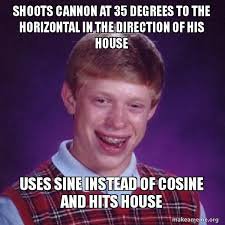The two points along with the center of the circle form an isosceles triangle. Two sides are radii of the circle. The base of the triangle is a line segment connecting the two points. Bisect the base with a line segment from the base to the center of the circle. Now we have two triangles, each with hypotenuse being a radius of the circle and the base being half the distance between the two points. The angle is half the angle that we want. sine of the half angle is the opposite side of the triangle (half the distance between the two points) over the hypotenuse (radius of the circle). The solution is then
angle = 2 x arcsin (0.5 x |P1 - P2| / radius)
Martin









 ?
?